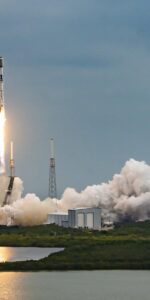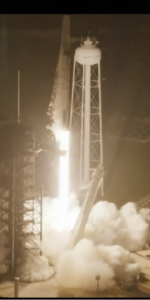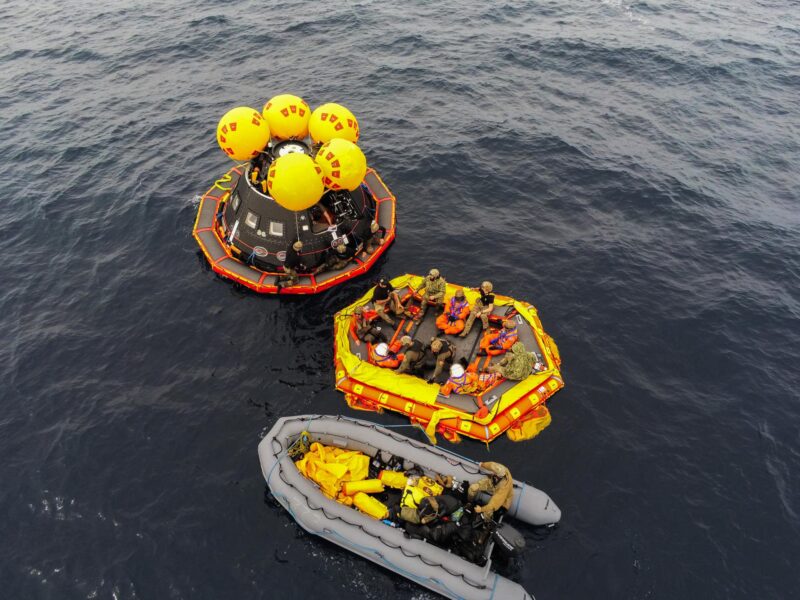
As 2024 dawned, it seemed as though humanity’s return to the Moon was imminent. According to NASA’s public schedule, the Artemis 2 crewed test flight was slated to launch in November of 2024. That all changed when NASA discovered three safety-critical issues with the mission’s Orion spacecraft, particularly a flaw in its life support system. The launch date was pushed back to September of 2025, but that does not mean that preparations for Artemis 2 are on hold. Astronauts Reid Wiseman, Victor Glover, Christina Koch, and Jeremy Hansen are taking advantage of the extra time by participating in a variety of training exercises. One of the largest exercises to date occurred last week when the crew, NASA’s Orion recovery team, and the U.S. Navy conducted a rehearsal of the Artemis 2 splashdown and recovery procedures.
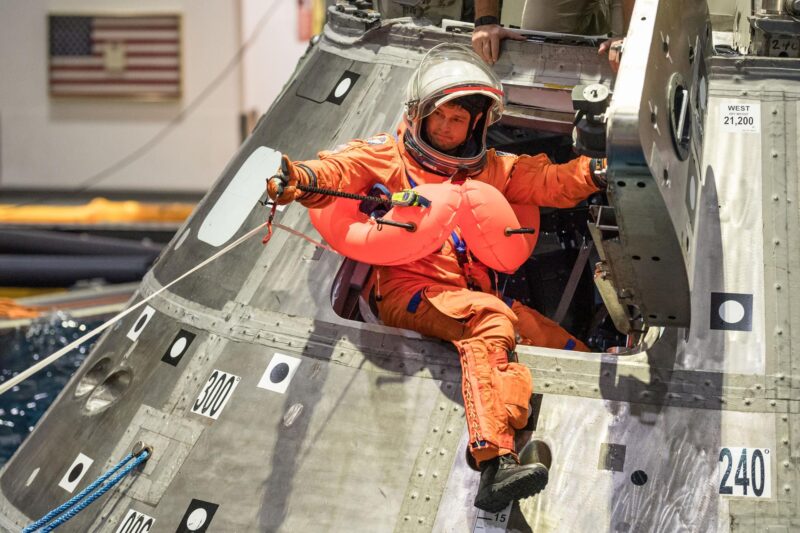
Artemis 2 will be one of NASA’s most ambitious missions since the Apollo era. To prepare for their lunar flyby, Wiseman, Glover, Koch, and Hansen are progressing through a comprehensive series of simulations and rehearsals. In September of 2022, Wiseman described this process to AmericaSpace. “(Artemis 2) is the first crewed flight of a vehicle, so not everything is polished ahead of time. We have our core systems training, which is led by Jacki Mahaffey, our chief training officer. She has done an amazing job getting everything ready. We sit in classroom activities, and we learn about each system from our flight control experts. That has gone far better than I thought – the content which they have developed is very polished.
“Then, we’re going to move into simulators, and along with the flight control team, we are going to begin to develop all of the procedures which the crew will run during the mission. We are also (working with) all of the engineering teams at Lockheed in Denver, in Houston, and at the Cape. We are running tests in their higher-fidelity simulators that are running the actual flight software, with the exact wire length between the computers and the same flight computers which will fly on Orion.”
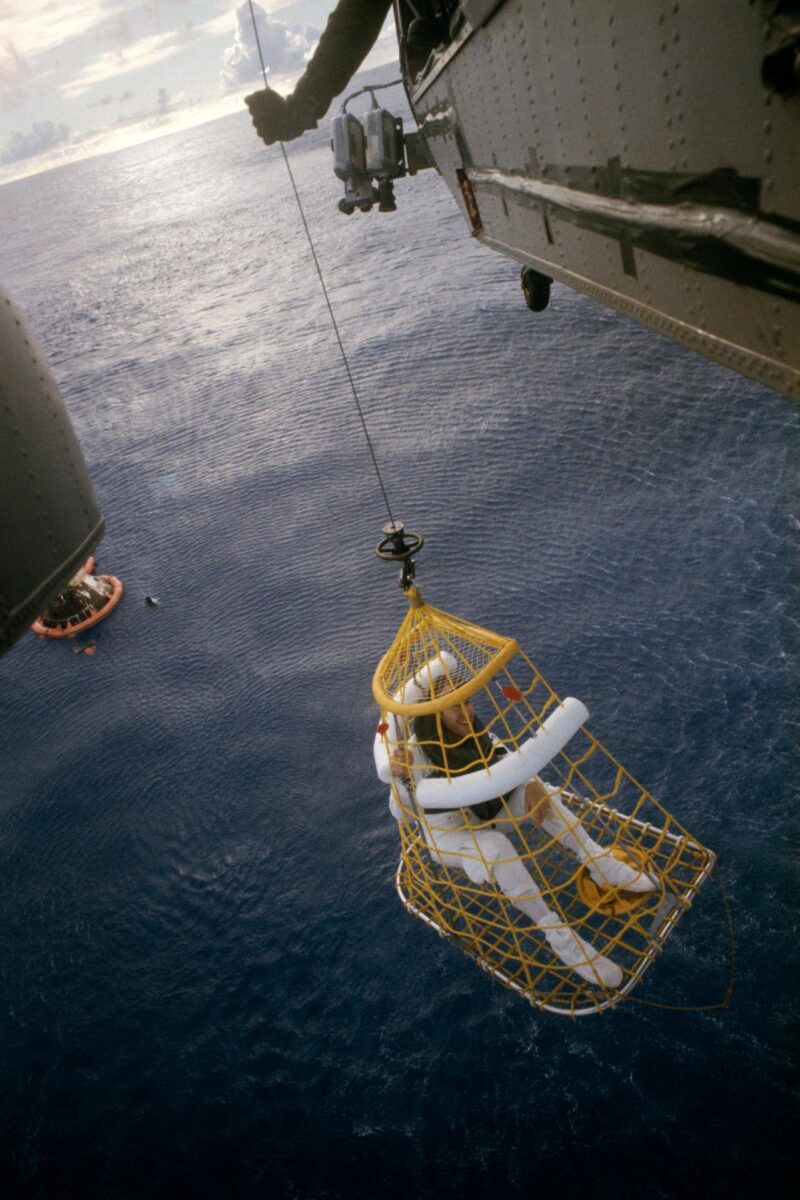
With 18 months remaining before their launch, the crew is still engrossed in this process. Thus far, Orion’s splashdown in the Pacific Ocean has been a key area of focus for NASA. Despite the fact that they will travel a quarter of a million miles to the Moon and back, one of the most dangerous phases of the crew’s mission will be their journey from Orion to the recovery ship. History is replete with examples of splashdowns which went horribly wrong, from the sinking of Gus Grissom’s Mercury capsule to a toxic propellant leak in the Apollo-Soyuz command module to boaters approaching the Crew Dragon Endeavour at an unsafe distance during Demo-2.
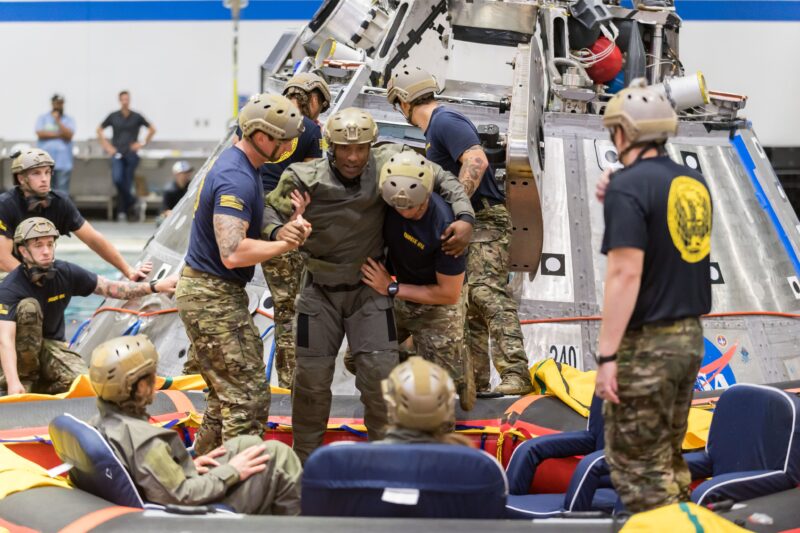
The Artemis recovery team aims to avoid these dramatic moments through a series of increasingly realistic simulations. Last July, Artemis 2 recovery training commenced within the relative safety of NASA’s Neutral Buoyancy Laboratory (NBL). Wiseman, Glover, Koch, and Hansen practiced disembarking Orion and boarding a large inflatable raft tethered to the capsule, which NASA dubbed the “front porch.” The primary goal of this exercise was to give the astronauts experience with exiting Orion while it is bobbing up and down in the water. At this early stage in their training, they were wearing plain clothes and they were assisted by U.S. Navy recovery divers.
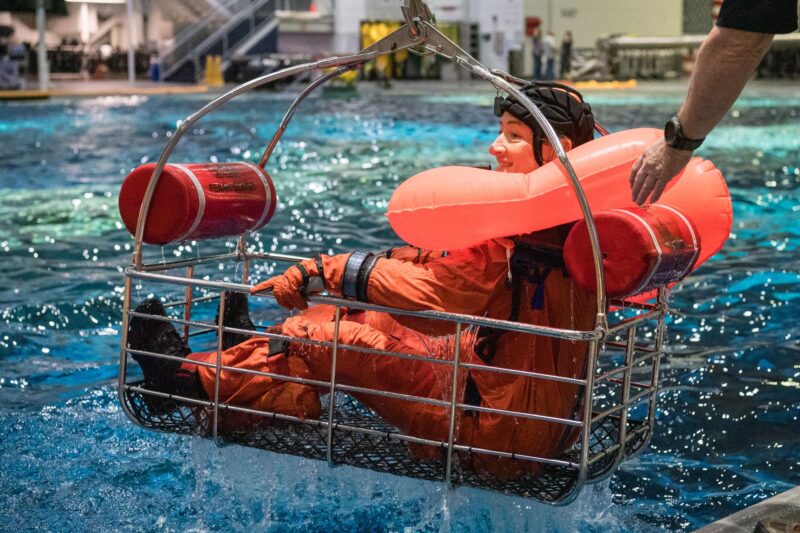
A subsequent series of tests extended from December through early February and added additional layers of difficulty. The crew repeated the same procedures in their bulky pressure suits and practiced egressing from Orion without assistance from the Navy’s divers. In the event of an off-course landing, they will have to board a life raft without external help. They also practiced climbing through the docking hatch on Orion’s roof, which serves as a backup exit if large waves render the main hatchway unsafe. Finally, the crew practiced boarding the baskets which recovery helicopters will use to haul them to safety.
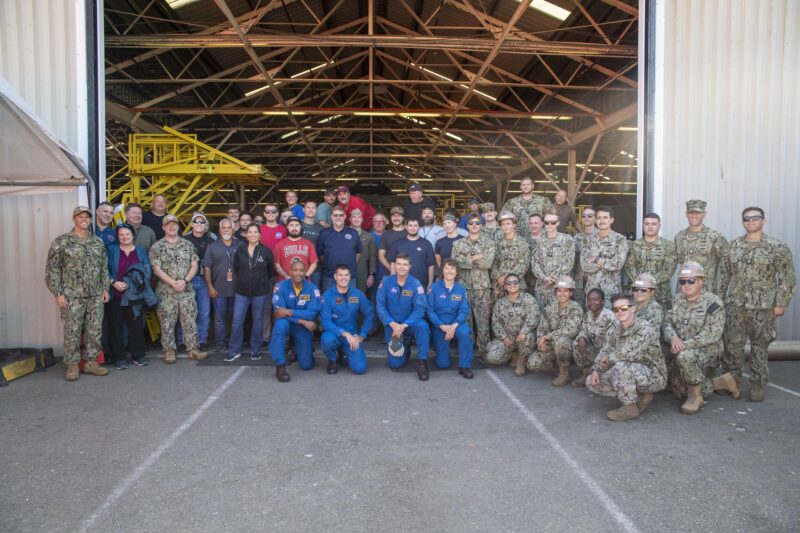
All of these tests provided Wiseman, Glover, Koch, and Hansen with invaluable knowledge about how to safely exit their spacecraft. However, the fidelity of any test at the NBL is limited. The open ocean is unpredictable by nature, and waves, fog, and even marine life can influence the outcome of a recovery. In addition, a successful recovery of a capsule and its crew relies upon a recovery ship and its contingent of helicopters. For these reasons, Underway Recovery Test-11 (URT-11) was a pivotal milestone towards the launch of Artemis 2.
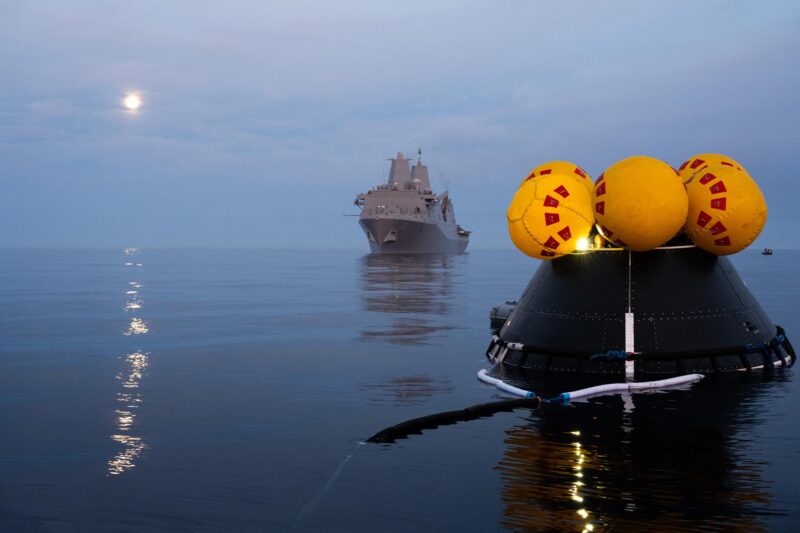
URT-11 took place over the course of a week, from February 22nd through February 28th. As its name suggests, it was the eleventh in a series of joint training exercises involving NASA and the Navy. The tests allow the two agencies to practice coordinating their operations while retrieving an Orion mockup from the ocean. URT-1 through URT-9 helped the recovery team prepare for the splashdowns of the unpiloted EFT-1and Artemis 1 test flights. URT-10 was used to test the revised procedures which will be used for Artemis 2, as the recovery team must now recover the crew in addition to their spacecraft. URT-11 incorporated suited astronauts for the first time.
The recovery ship for URT-11 was the USS San Diego. The San Diego was commissioned in 2012, and she has remained in service ever since. She is no stranger to spaceflight, as she hosted the first URT exercise prior to the launch of EFT-1 [1]. However, she ultimately yielded the honor of recovering EFT-1 to her sister ship, the Anchorage, when the mission was delayed and the San Diego was deployed to the Red Sea (the USS Portland recovered the Artemis 1 capsule in December of 2022).
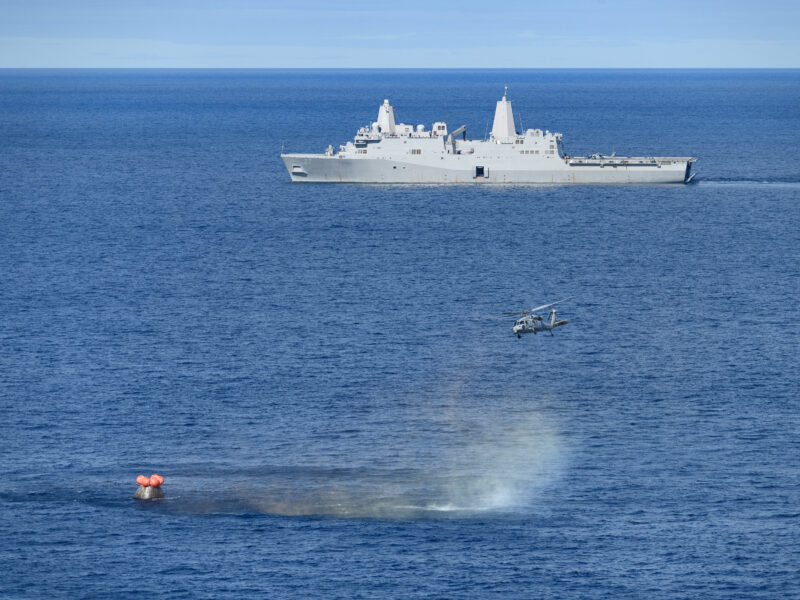
The San Diego is one of twelve Landing Platform Dock (LPD) ships in service with the Navy. These majestic 660-foot-long vessels are the distant descendants of the landing craft used by the Allies on D-Day. The centerpiece of each ship is a large 390-by-50-foot well deck which can be flooded with seawater. This compartment was designed to disgorge hundreds of Marines onto an occupied beach, but in peacetime, it also enables NASA to tow Orion directly into the ship without hoisting it out of the ocean. Each LPD is capable of housing a full complement of divers, engineers, specialized equipment, and helicopters. For these reasons, NASA selected the LPDs as the primary recovery ships for the Orion program, in lieu of the aircraft carriers which were used during the Apollo era.
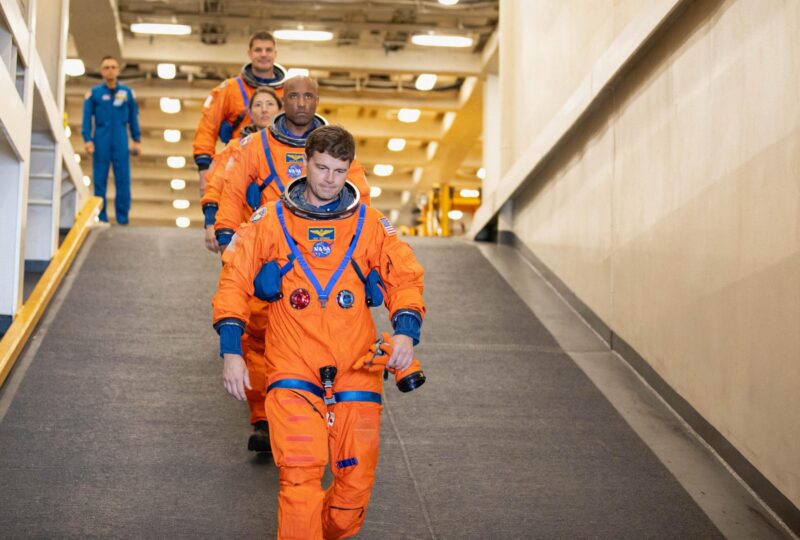
URT-11 commenced on Thursday, February 22nd. NASA’s Orion recovery team loaded a lifelike Orion mockup into the well deck of the San Diego. They were joined by Wiseman, Glover, Koch, and Hansen, who were garbed in their iconic orange Orion Crew Survival Suits. With her entire contingent of military sailors and civilian engineers onboard, the San Diego set sail for a short journey to a training area within sight of California’s coastline.
Once the ship was on station, NASA rehearsed the Artemis 2 recovery procedures from beginning to end. The four astronauts boarded the Orion mockup, climbed into the seats which they will occupy during splashdown, and closed the hatch. The capsule was towed out to sea and released at the approximate position of a spacecraft which had completed an on-target landing. Next, the Navy’s team of divers carefully approached Orion in a pair of small motorized skiffs. During an actual splashdown, they will use spectrometers to search for toxic hypergolic fumes from the spacecraft’s hypergolic propellant system.
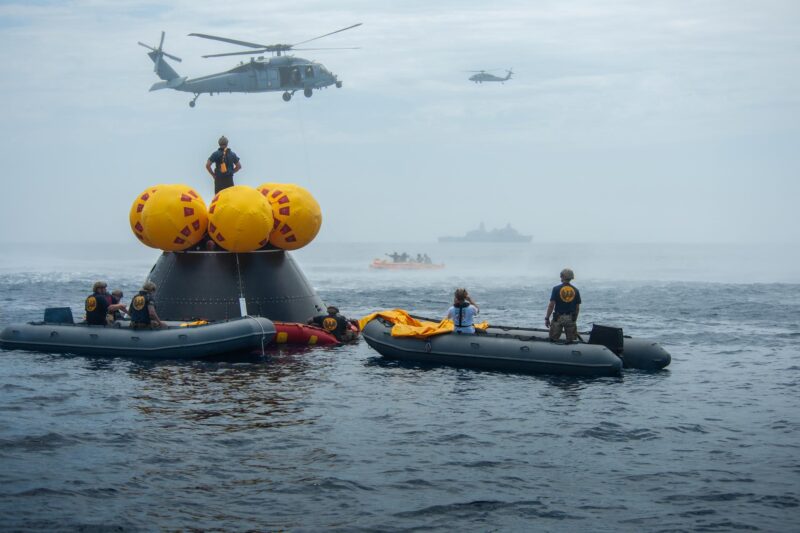
With this safety precaution complete, the divers attached an inflatable collar to Orion. This flotation device forms a ring around the capsule’s heat shield, and it prevents Orion from capsizing if it encounters any large waves. Once again, the technical heritage from the Apollo program is proving to be invaluable for Artemis, as a similar collar was used during the recovery of America’s first crewed lunar missions. The inflatable “front porch,” which is nearly as large as Orion itself, was subsequently towed into place and attached to the capsule.
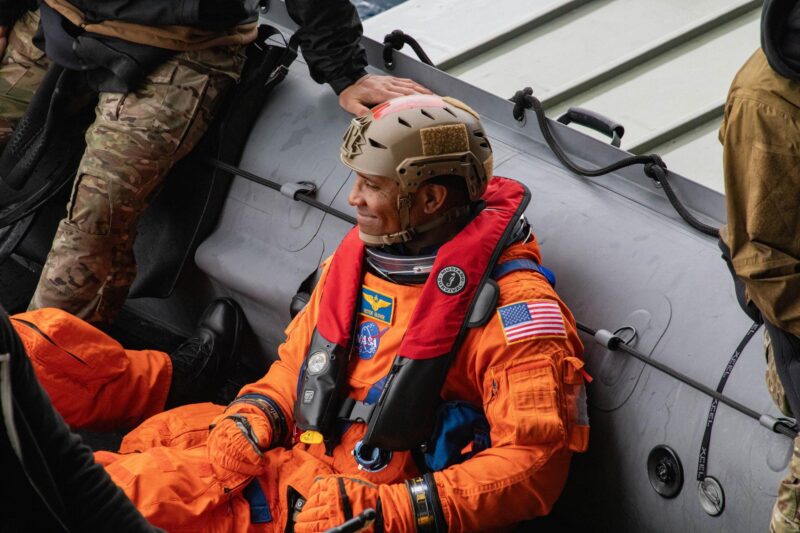
Throughout this process, Wiseman, Glover, Koch, and Hansen waited patiently inside the Orion test article. With the “front porch” in position, the stage was set for them to exit the crew module. The Navy team opened the hatch and helped the astronauts egress the spacecraft in single file. The quartet may be deconditioned after spending ten days in space, so the divers will assist them as they step out of Orion and into the raft.
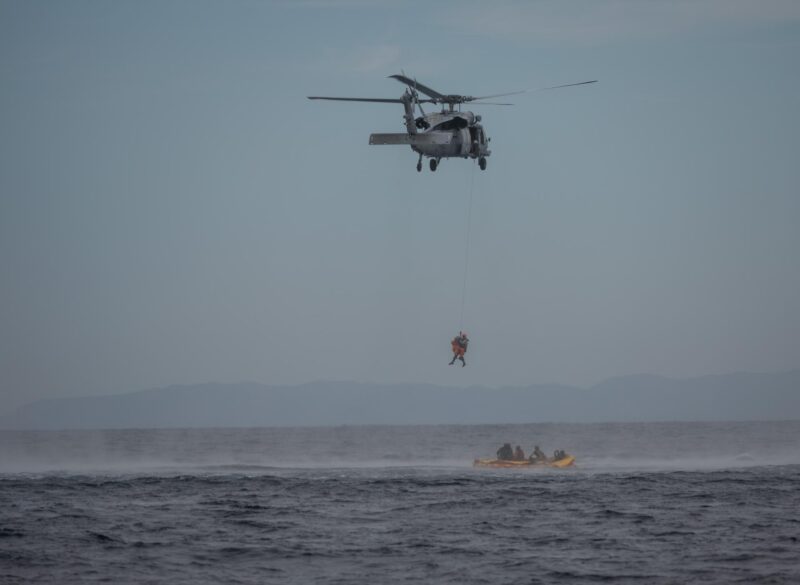
After exiting Orion, the astronauts rested while the “front porch” was untethered and towed away from the capsule. The large raft is stable in the pitching sea, and it is capable of remaining upright while floating independently. At this point, the San Diego’s four SH-60 Seahawk helicopters flew into action. Two of the rotorcraft were equipped with rectangular metal baskets, each of which is large enough to carry a suited astronaut. Wiseman, Glover, Koch, and Hansen climbed into the baskets and were winched into the helicopters. The Seahawk crews then transported them safely to the deck of the recovery ship.
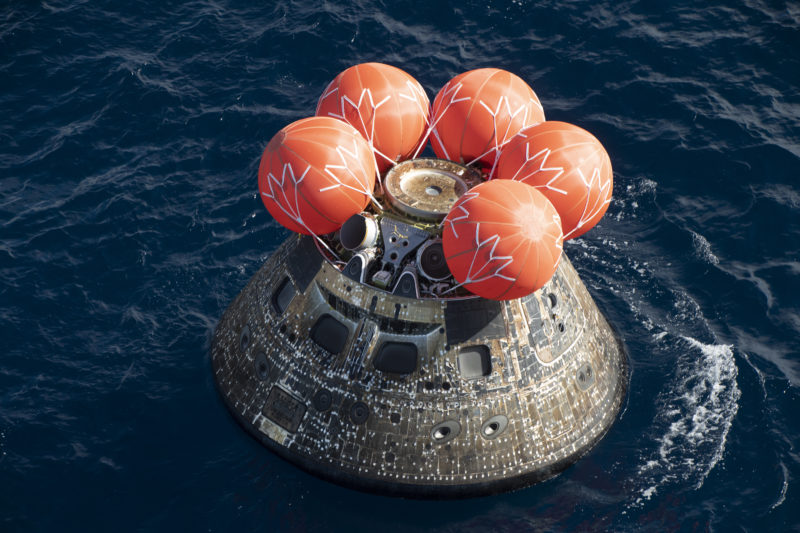
From beginning to end, the entire recovery process takes about two hours. Once they step onto the deck of the LPD, the astronauts will walk to the ship’s medical bay for a standard post-flight check-up. Throughout the operation, NASA and the Navy’s most pressing objective is to expediently recover the crew. They will only shift their focus to retrieving Orion once Wiseman’s crew is reunited with their colleagues on the deck of the recovery ship. The recovery process for the Artemis 2 spacecraft was also tested during URT-11. It is nearly identical to the procedure which was employed during Artemis 1. Three lines were attached to the capsule, and it was gingerly towed into the well deck of the San Diego. The seawater was then drained from the bay, leaving Orion resting in a specialized cradle.
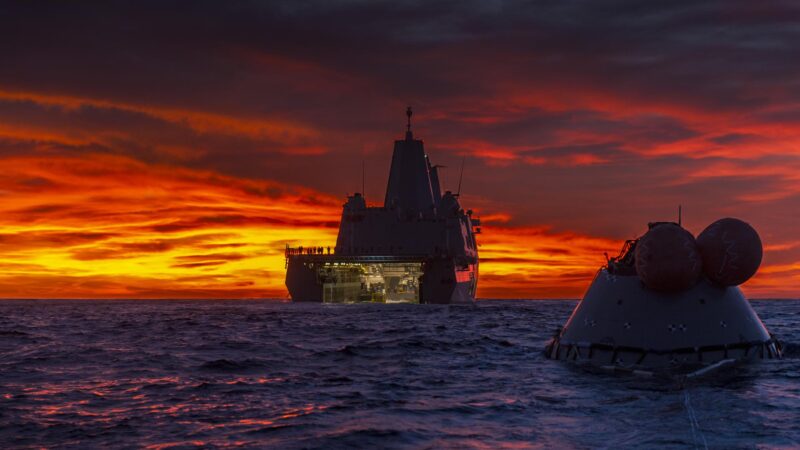
As President Franklin Roosevelt once said, “A smooth sea never made a skilled sailor.” While it is often assumed that a crewed spaceflight ends with a successful splashdown, there is a reason why Mercury, Gemini, and Apollo flight directors never allowed their teams to celebrate until the crew was standing on the deck of their recovery ship. The Orion team understands that recovery is a complex and potentially dangerous process. Underway Recovery Test-11 establishes a solid foundation for overcoming these challenges and bringing Artemis 2 to a close on a triumphant note.




